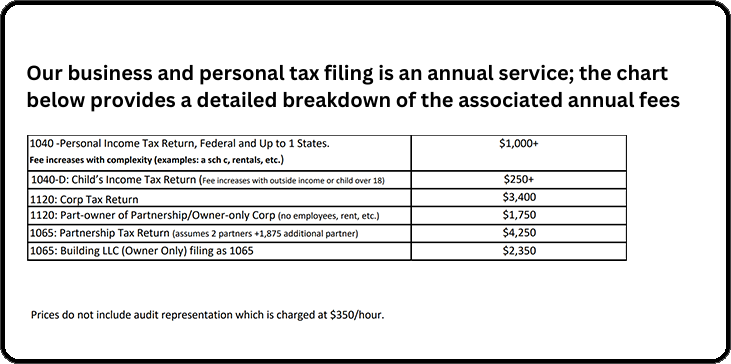Tune in to our podcast series: The Dental Board Room
Listen Now

The dental economy is facing a loop that feels almost impossible to escape. Costs keep rising, insurance payments stay flat, dentists raise fees to compensate, and patients pull back on care because they can’t afford it. The result? Lighter schedules, tighter margins, and growing fatigue across the industry.
The ADA Health Policy Institute’s Q3 2025 Report captures this spiral perfectly. It’s what host Wes Read and his AI co-hosts described as the “fiscal squeeze”, a cycle that’s squeezing the life out of profitability while testing every assumption about how dental practices operate.
To move forward, dentists need to rethink the way they price, hire, and plan for growth. Here’s how that cycle works and what can be done to break it.
Every part of the business model is under pressure.
Supplies and equipment prices have risen 5 percent since the start of 2025.
Staff wages are up too, growing slightly faster than inflation.
Meanwhile, insurance reimbursements are stagnant.
That’s a math problem with only one short-term solution: raise fees. And that’s exactly what most dentists did. According to the ADA data, 65.8 percent of practices increased their prices this year, averaging a 6.7 percent jump across their fee schedules.
Those increases help stabilize cash flow, but they don’t fix the underlying issue. Every price hike risks pushing more patients out of the system. Affordability was one of the most common worries cited by dentists in the report, right alongside staffing shortages and insurance stagnation.
Fee increases are often necessary to offset cost inflation, but they carry a hidden cost of their own: hesitation from patients.
Many practices have noticed fewer routine visits and longer gaps between cleanings. Patients aren’t rejecting dentistry; they’re rationing it. Preventive care is the first to go when budgets tighten, even though skipping it leads to larger issues later.
That means revenue is becoming more concentrated among fewer patients, often those seeking high-value or urgent treatments. On paper, income may hold steady or even rise, but the foundation beneath it weakens. A smaller active patient base makes every no-show or cancellation sting more.
This is where the “cycle” begins: higher fees protect profit short-term, but over time, they risk reducing overall patient volume, which then pressures practices to raise fees again.
At the heart of this tension lies insurance reimbursement. It’s the unyielding constant in a business where everything else moves.
Dentists can’t control what PPOs or public plans pay out, and those rates have barely shifted in years. The result? Every insurance patient costs more to treat than before, while reimbursement per procedure stays the same.
That gap creates a pivotal decision point:
Neither choice feels great. Yet more practices are starting to opt out of low-paying plans altogether. As the report explains, some dentists simply can’t afford to accept reimbursement rates that fall below their cost of care. It’s a high-stakes move, but for many, it’s survival rather than rebellion.
Even if patient demand were stronger, many practices would still be struggling to meet it, because they can’t find enough staff.
The ADA data shows that one in three dentists was actively recruiting in Q3 2025. Yet total employment in the dental sector barely moved, rising only 0.5 percent over the past year.
Why the disconnect? Because finding qualified staff is incredibly difficult, especially for one crucial role: dental hygienists.
The numbers are staggering: 90 percent of dentists hiring hygienists describe the process as “very or extremely challenging.” And that figure has barely changed in three years.
Even when positions are filled, the process takes months. One-fifth of successful hygienist hires took more than six months to complete. During that time, production slows, patient flow is limited, and stress levels rise.
A shortage this persistent means many practices are running below full capacity, even when there’s work to do.
Operating short-staffed doesn’t just create scheduling headaches. It affects every part of the business:
This workforce gap also limits how effectively practices can respond to the fiscal squeeze. Even if patient demand increases, without enough hands on deck, revenue growth hits a ceiling.
There’s no single fix, but there are several shifts that can help practices regain control.
Patients react less to fee increases when they understand the “why.” Clear communication about costs, from lab fees to material shortages, turns pricing from a surprise into a conversation.
Some practices are experimenting with tiered service options, transparent pricing menus, or bundled preventive plans. These small adjustments can make care feel more predictable and accessible.
Technology can’t fill a hygienist’s chair, but it can lighten the administrative load.
With 41 percent of practices investing in software upgrades, many are focusing on systems that handle billing, scheduling, and patient reminders automatically. The goal isn’t just efficiency; it’s reclaiming time for human connection, the one thing automation can’t replace.
Breaking the workforce bottleneck may mean rethinking traditional job roles. Cross-training team members, exploring part-time or flexible arrangements, and offering continuing education benefits can all make positions more appealing.
Long-term, the industry will need stronger pipelines for hygienist training and recruitment, but individual practices can start by making their offices more desirable places to work.
The decision to drop a plan shouldn’t be emotional; it should be mathematical. Analyze production data, reimbursement averages, and patient retention by payer. If a plan consistently loses money, it might be time to renegotiate or exit.
Dentists who have made that move often report initial anxiety followed by relief, fewer low-margin appointments, and more time for patients who value their care.
The ultimate defense against the fiscal squeeze is loyalty. Practices that invest in long-term relationships weather downturns better than those chasing short-term volume.
That means nurturing trust, reinforcing preventive education, and making every visit feel personal. The more your patients believe in the value of consistent care, the less price-sensitive they become.
Profitability isn’t disappearing, it’s evolving. The dentists who stay adaptable are proving that stability is possible even in this environment. The model just looks different: leaner, smarter, and more focused on efficiency than expansion.
This era may push practices to be more analytical and creative than ever. It’s no longer about simply seeing more patients; it’s about building a system that can thrive even when external pressures mount.
Breaking the cycle starts with awareness. Dentists can’t control inflation or reimbursement rates, but they can control how they respond. The key lies in balancing fair pricing, efficient operations, and genuine patient connection.
The fiscal squeeze is real, but it’s also shaping a new generation of dental entrepreneurs, ones who understand that resilience comes not from waiting for better times, but from building smarter systems that make profitability sustainable.
Watch the full Dental Boardroom Podcast episode for expert insights on pricing, staffing, and staying profitable in 2025.
Wes knows what's best for dental practices. He's been doing this for a long time and he sees lots of practices. He can tell me how our practice is doing, and what we can do to increase our productivity. With past CPA's, there were no ideas. It was all coming from me, saying "I think I can do better, but I don't know how." I come in to meet with Wes and he says "You CAN do better, and I know how."
PracticeCFO is in hundreds of dental offices around the country. They know what numbers should look like. They know what percentages of payroll, rent and supplies should be, and they will hold you accountable to those numbers, which will really help you stick to your plan and your path of growth and savings. That is invaluable
Whenever something comes up, whether it's building or practice related and we weren't sure where the numbers would go, PracticeCFO has been instrumental in helping us figure that out. I can't say enough of how important that is - that it goes beyond that initial partnership. They make sure this business marriage works.
When I go home from work, I don't spend a whole lot of time stressing about what my books look like, or how much I owe in taxes. By using PracticeCFO, the burden of keeping track of a lot of the big financial numbers and metrics are taken off my plate.
PracticeCFO helped me develop a plan for the future. I have colleagues that work with other accountants that don't have a plan - they just look at the numbers of the practice and that's it. There's no plan for 10, 20 years from now. But with PracticeCFO, you get that. PracticeCFO makes you feel like you're they're only client.
(In reference to his practice sale) What could've been super stressful, wasn't! When picking John and Wes, it was from word of mouth recommendations and other people's experiences from the past that really did it for me. And it turns out that those recommendations were right on the line.
Wes knows the business side of dentistry. His comprehensive plan will organize your personal and professional finances so you can focus on taking care of patients. Massive ROI.
I can’t say enough good things about everyone at PracticeCFO. Everyone on the team is professional, organized, knowledgeable, helpful and kind. They also respond to emails and phone calls immediately and are always happy to help. They have helped me navigate year-to-year as a business owner. PracticeCFO gives me peace of mind that my business is in good hands.
I love Practice CFO! They have helped me obtain a practice and maintain a practice. They are incredible people who are on top of everything and make owning and running the business portion of a practice easy. They couldn’t be better for my business and my sanity. They have every detail of the business and taxes taken care of where all I have to do is show up and follow their easy steps to success!
Practice CFO has the best tools I’ve seen for personal tax and financial planning in addition to top-tier corporate tax and accounting services. I have been very pleased with the level of quality service. They manage my monthly bookkeeping and accounts payable. It is a great system and saves me a ton of time, and it allows us to have monthly financial statements within a week of month end.

This will close in 0 seconds